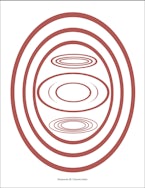
Joze Plecnik
Architect 1872–1957
Paperback
$16.95
Paperback
ISBN: 9780262521765
Pub date: September 8, 1992
Publisher: The MIT Press
Hardcover
$39.95
Hardcover
ISBN: 9780262022903
Pub date: October 4, 1989
Publisher: The MIT Press
- Paperback
- 9780262521765
- Published: September 1992
- Publisher: The MIT Press
$16.95
- Hardcover
- 9780262022903
- Published: October 1989
- Publisher: The MIT Press
$39.95











